Top 10 Nuts and Seeds Highest in Fiber
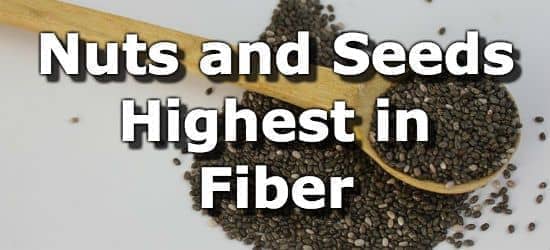
Nuts and seeds are renowned for their heart-healthy benefits, due in large part to the fiber found in nuts. (1)
Nuts and seeds high in fiber include chia seeds, flax seeds, squash seeds, pumpkin seeds, dried coconut, sesame seeds, sunflower seeds, almonds, pine nuts, pistachios, and chestnuts. The daily value (DV) for fiber is 28g per day (2), and a one-ounce portion of high fiber nuts or seeds provide between 5 and 35% of that daily value. A one-ounce portion of nuts or seeds is roughly equal to a handful.
Chia and flax seeds have the added benefit of being high in heart-healthy omega 3 fatty acids. Almonds, walnuts, and pistachios have been shown to lower cholesterol.
Any of the fiber-rich nuts and seeds listed below are a great addition to a healthy diet, with 1-2 ounces of nuts or seeds being a good daily portion size.
Below are the top 10 nuts and seeds highest in fiber. For more see the extended list of over 40 nuts and seeds high in fiber.
List of Nuts and Seeds High in Fiber
-
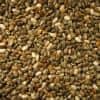 1. Chia Seeds + Add
1. Chia Seeds + Add
Fiber
per oz(~2 Tblsp)Fiber
per 100gFiber
per 200 Calories10g
(35% DV)34g
(123% DV)14g
(51% DV)Chia seeds are also high in Omega 3 Fatty Acids.
-
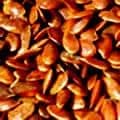 2. Flax Seeds + Add
2. Flax Seeds + Add
Fiber
per OzFiber
per 100gFiber
per 200 Calories8g
(28% DV)27g
(98% DV)10g
(37% DV)Flax seeds are also high in Omega 3 Fatty Acids.
-
 3. Squash and Pumpkin Seeds + Add
3. Squash and Pumpkin Seeds + Add
Fiber
per 1 Oz HandfulFiber
per 100gFiber
per 200 Calories5g
(19% DV)18g
(66% DV)8g
(29% DV)Squash and pumpkin seeds are also very high in protein.
-
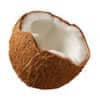 4. Dried Coconut + Add
4. Dried Coconut + Add
Fiber
per OzFiber
per 100gFiber
per 200 Calories5g
(17% DV)16g
(58% DV)5g
(18% DV) -
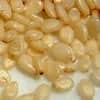 5. Sesame Seeds + Add
5. Sesame Seeds + Add
Fiber
per OzFiber
per 100gFiber
per 200 Calories4g
(14% DV)14g
(50% DV)5g
(18% DV) -
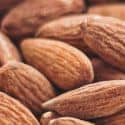 6. Almonds + Add
6. Almonds + Add
Fiber
per 1oz HandfulFiber
per 100gFiber
per 200 Calories4g
(13% DV)13g
(45% DV)4g
(15% DV) -
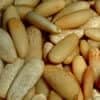 7. Pine Nuts + Add
7. Pine Nuts + Add
Fiber
per 1 Oz HandfulFiber
per 100gFiber
per 200 Calories3g
(11% DV)11g
(38% DV)3g
(12% DV) -
 8. Pistachios + Add
8. Pistachios + Add
Fiber
per 1 Oz HandfulFiber
per 100gFiber
per 200 Calories3g
(11% DV)11g
(38% DV)4g
(14% DV)Pistachios are also very high in potassium.
-
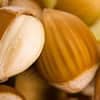 9. Hazelnuts + Add
9. Hazelnuts + Add
Fiber
per 1 Oz HandfulFiber
per 100gFiber
per 200 Calories3g
(10% DV)10g
(35% DV)3g
(11% DV) -
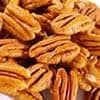 10. Pecans + Add
10. Pecans + Add
Fiber
per OzFiber
per 100gFiber
per 200 Calories3g
(10% DV)10g
(34% DV)3g
(10% DV) -
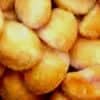 11. Macadamia Nuts + Add
11. Macadamia Nuts + Add
Fiber
per 1 Oz HandfulFiber
per 100gFiber
per 200 Calories2g
(9% DV)9g
(31% DV)2g
(9% DV) -
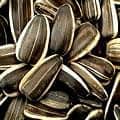 12. Sunflower Seeds + Add
12. Sunflower Seeds + Add
Fiber
per 1 Oz HandfulFiber
per 100gFiber
per 200 Calories2g
(9% DV)9g
(31% DV)3g
(11% DV)Sunflower seeds are very high in Vitamin E.
-
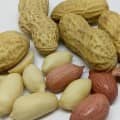 13. Peanuts (Dry Roasted) + Add
13. Peanuts (Dry Roasted) + Add
Fiber
per OzFiber
per 100gFiber
per 200 Calories2g
(9% DV)8g
(30% DV)3g
(10% DV) -
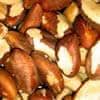 14. Brazil Nuts + Add
14. Brazil Nuts + Add
Fiber
per 1 Oz HandfulFiber
per 100gFiber
per 200 Calories2g
(8% DV)8g
(27% DV)2g
(8% DV)Brazil nuts are very high in selenium.
-
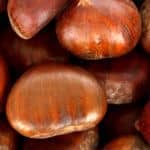 15. Chestnuts + Add
15. Chestnuts + Add
Fiber
per oz(~3 Chestnuts)Fiber
per 100gFiber
per 200 Calories1g
(5% DV)5g
(18% DV)4g
(15% DV)
How much fiber do you need each day?
The daily value (DV) for fiber is 28 grams per day. (2) This is the amount shown on food labels to help the average person compare the health benefits of different foods. However, for many people, this amount is actually too low.
The adequate intake (AI) is a more accurate daily target, and varies by age and gender. The AI for fiber is up to 38 grams per day. (3) We've included the specific values below for various groups below, so you can determine what your personal target should be.
The average American consumes far less than the DV for fiber, let alone the AI for their demographic group. (4)
Here is the breakout of the adequate intake by age and gender for fiber: (3)
| Life Stage | RDA |
|---|---|
| Children | |
| 1-3 years old | 19g |
| 4-8 years old | 25g |
| Males | |
| 9-13 years old | 31g |
| 14-50 years old | 38g |
| 50+ years old | 30g |
| Females | |
| 9-18 years old | 26g |
| 19-50 years old | 25g |
| 50+ years old | 21g |
| Pregnancy | |
| 14-50 years old | 29g |
| Lactation | |
| 14-50 years old | 29g |
From the Nutrient Ranking Tool
Use the ranking tool links below to select foods and create your own food list to share or print.
- Foods High in Fiber
- Foods Low in Fiber
- Vegetables High in Fiber
- Fruits High in Fiber
- Vegetarian Foods High in Fiber
- Nuts High in Fiber
- Grains High in Fiber
- Beans High in Fiber
- Breakfast Cereals High in Fiber
- Fast Foods High in Fiber
View more nutrients with the nutrient ranking tool, or see ratios with the nutrient ratio tool.
Related
Data Sources and References
- Thomas M. Barber, Stefan Kabisch, Andreas F. H. Pfeiffer and Martin O. Weickert The Health Benefits of Dietary Fibre Nutrients. 2020 Oct; 12(10): 3209.
- FDA on Daily Values
- Institute of Medicine Dietary Reference Intakes
- Diane Quagliani, MBA, RDN, LDN and Patricia Felt-Gunderson, MS, RDN, LDN Closing America’s Fiber Intake Gap Am J Lifestyle Med. 2017 Jan-Feb; 11(1): 80–85. Published online 2016 Jul 7. doi: 10.1177/1559827615588079
- U.S. Agricultural Research Service Food Data Central
Simplify Nutrition Tracking with MyFoodData!
Speedy Tools and Detailed Data FREEEasily analyze your meals to find the best foods for your goals.
✅ Use our recipe nutrition calculator and nutrition comparison tool.
✅ Access expert nutrition data tools and in-depth articles.
✅ Log foods and organize your recipes with a free account.


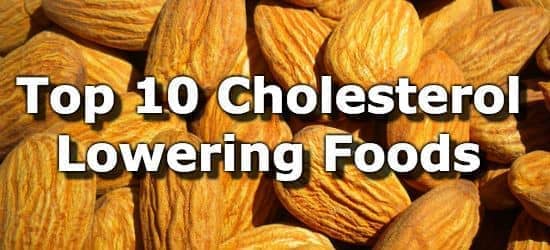 Next ➞
Next ➞
